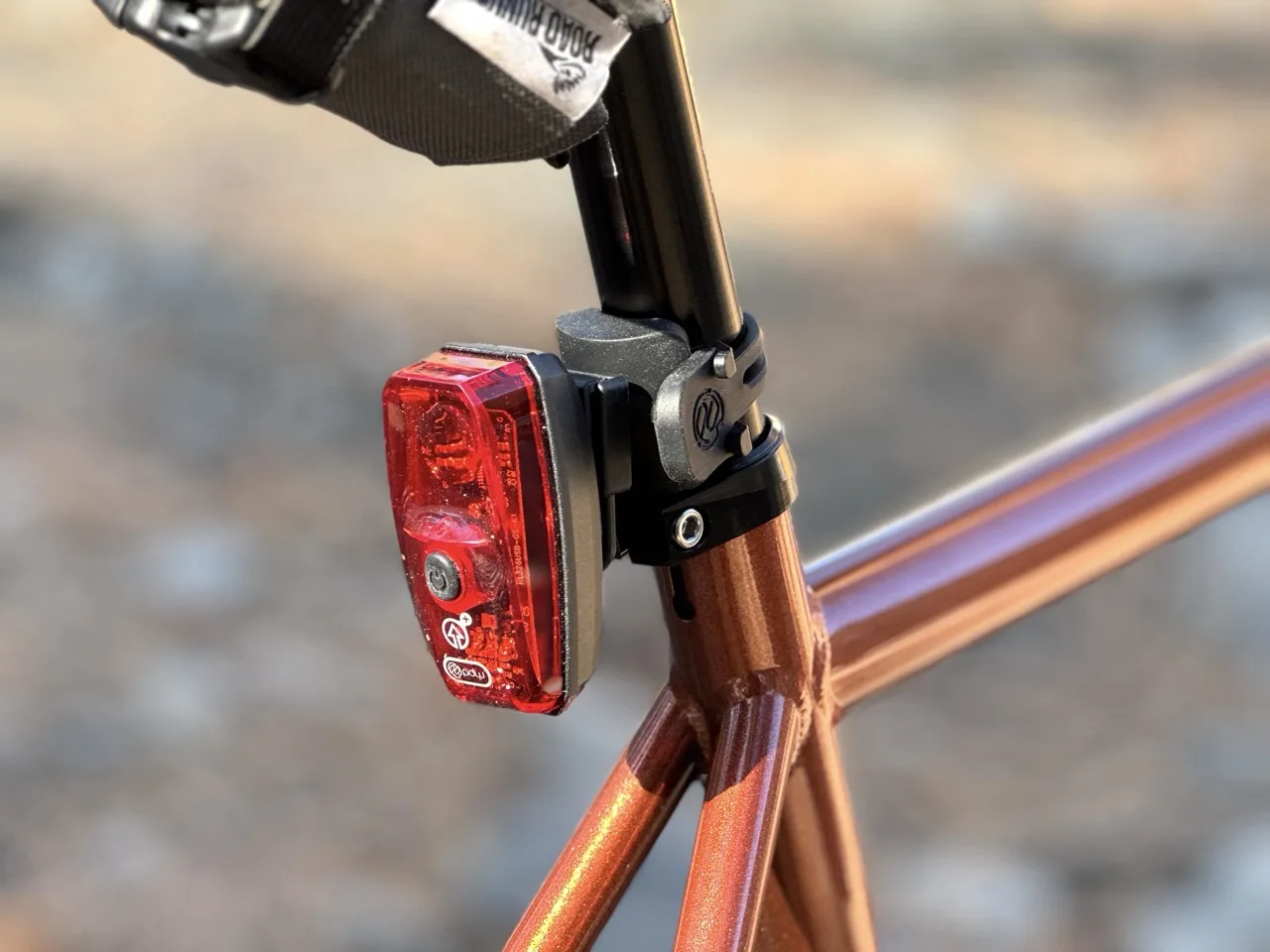The small crew at Portland Design Works (PDW) is a fun-loving group that creates awesome gear for the everyday cyclist. I was able to get a hold of one of their clever tail lights recently, the Gravity Plus USB Tail Light. This is a cool, unique tail light that has an accelerometer built right into it.
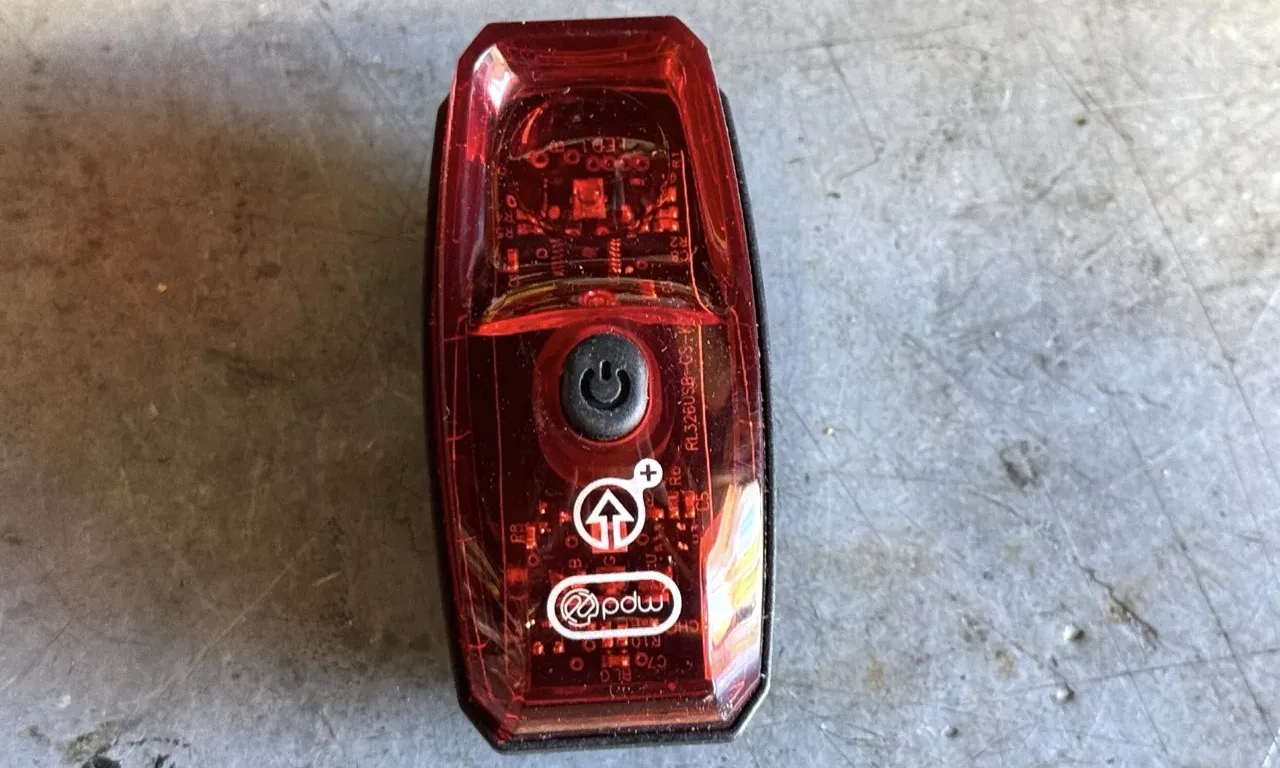
Having an accelerometer built into the light simply means the accelerometer will detect deceleration and automatically activate a second, super bright, solid beam light to warn following traffic that you’re slowing down. This same brighter light will also come on if you make any abrupt motion, like swerving to escape a road hazard, for example.
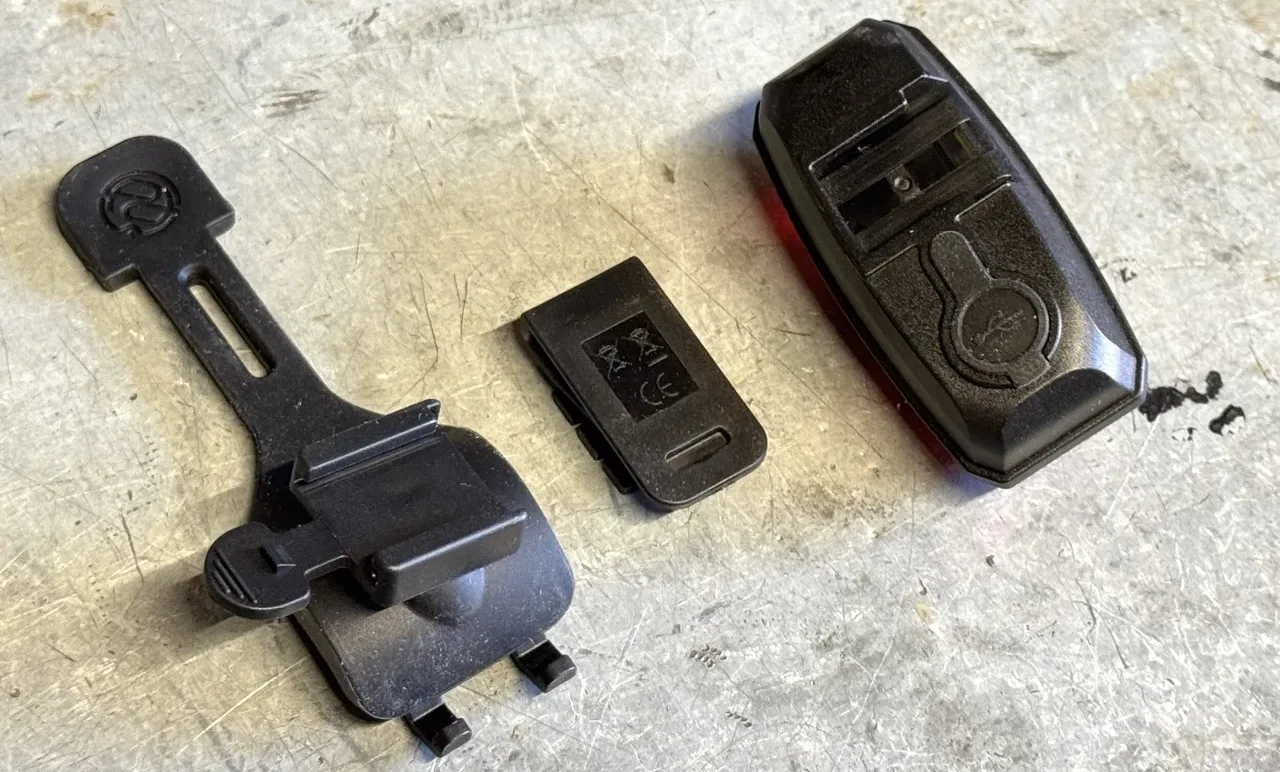
The Gravity Plus is a great idea executed in a small, handsome package. It’s bigger than my old “go-to” battery-powered rear light, but not so big that it looks cumbersome or unsightly.
One of the other cool things about this tail light is that the Gravity Plus has a pretty long battery life of up to 30 hours of use in flash mode (80 lumens), or 12 hours in solid mode (20 lumens). When the brighter “brake light” comes on it blazes at a very bright 100 lumens.
Mounting
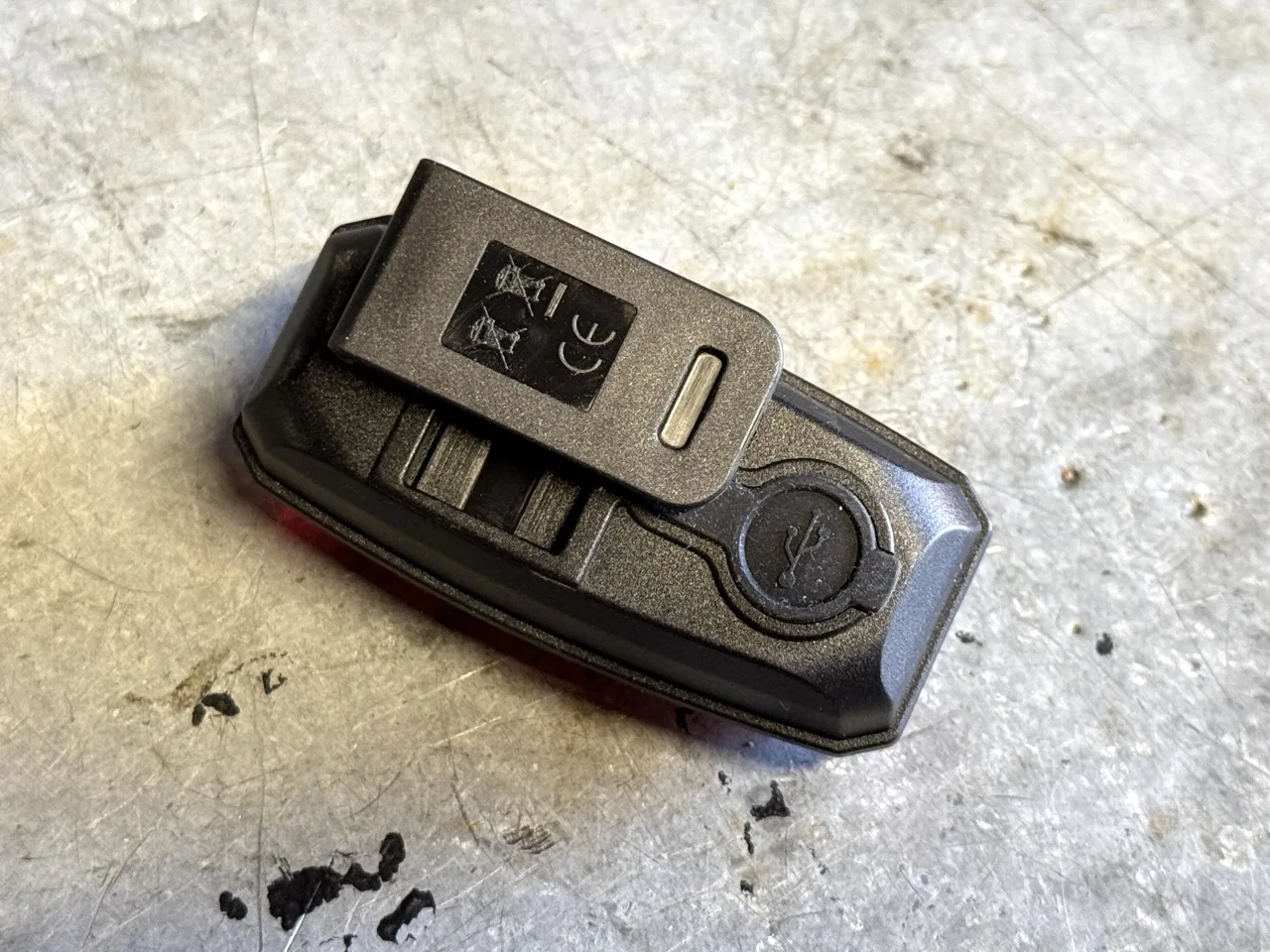
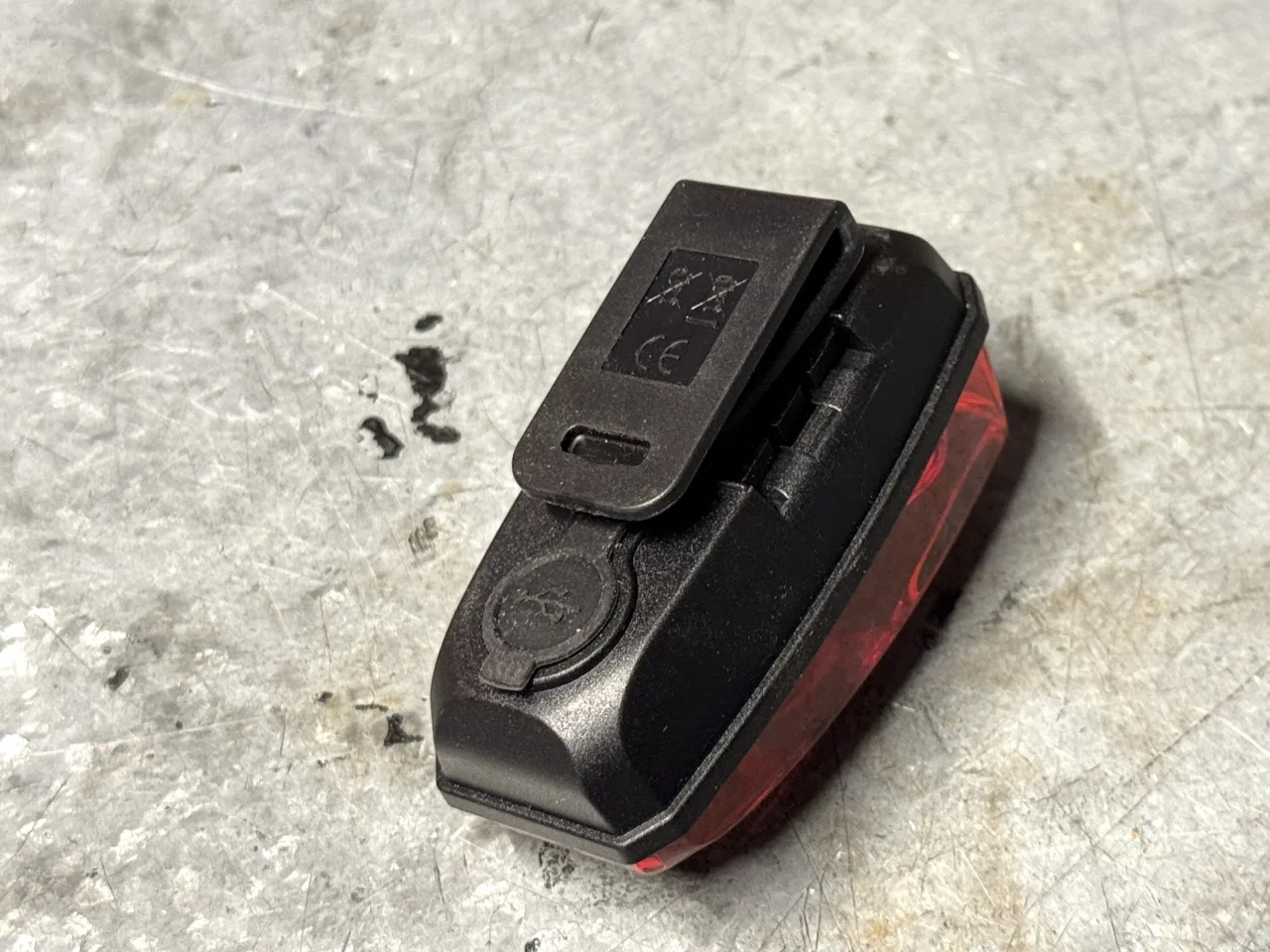
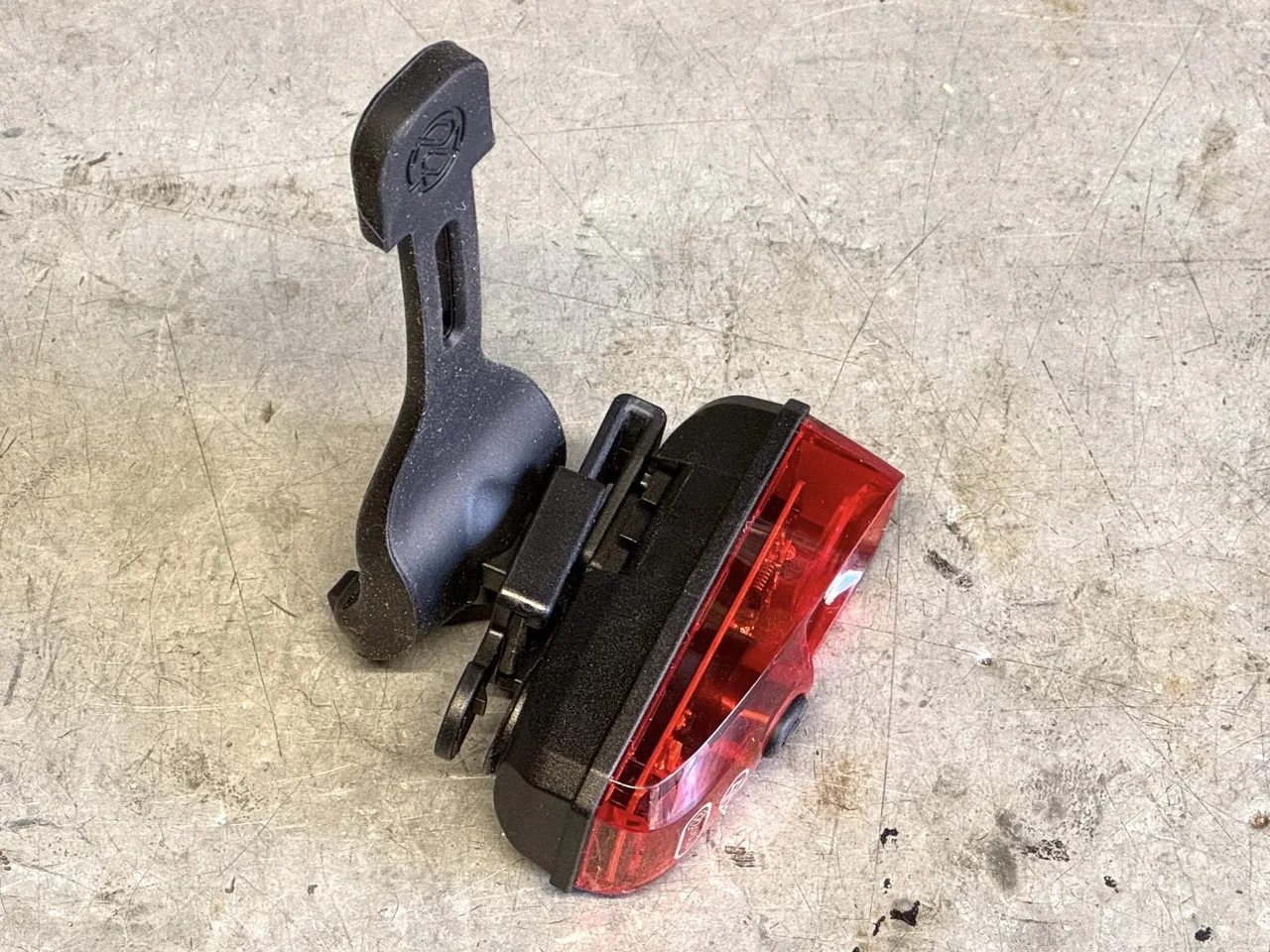

I chose to mount the Gravity Plus on my seatpost. Mounting is easy. Just snap the clip to the back of the light and clip the light to the mount. Then fasten the mount to your desired location.
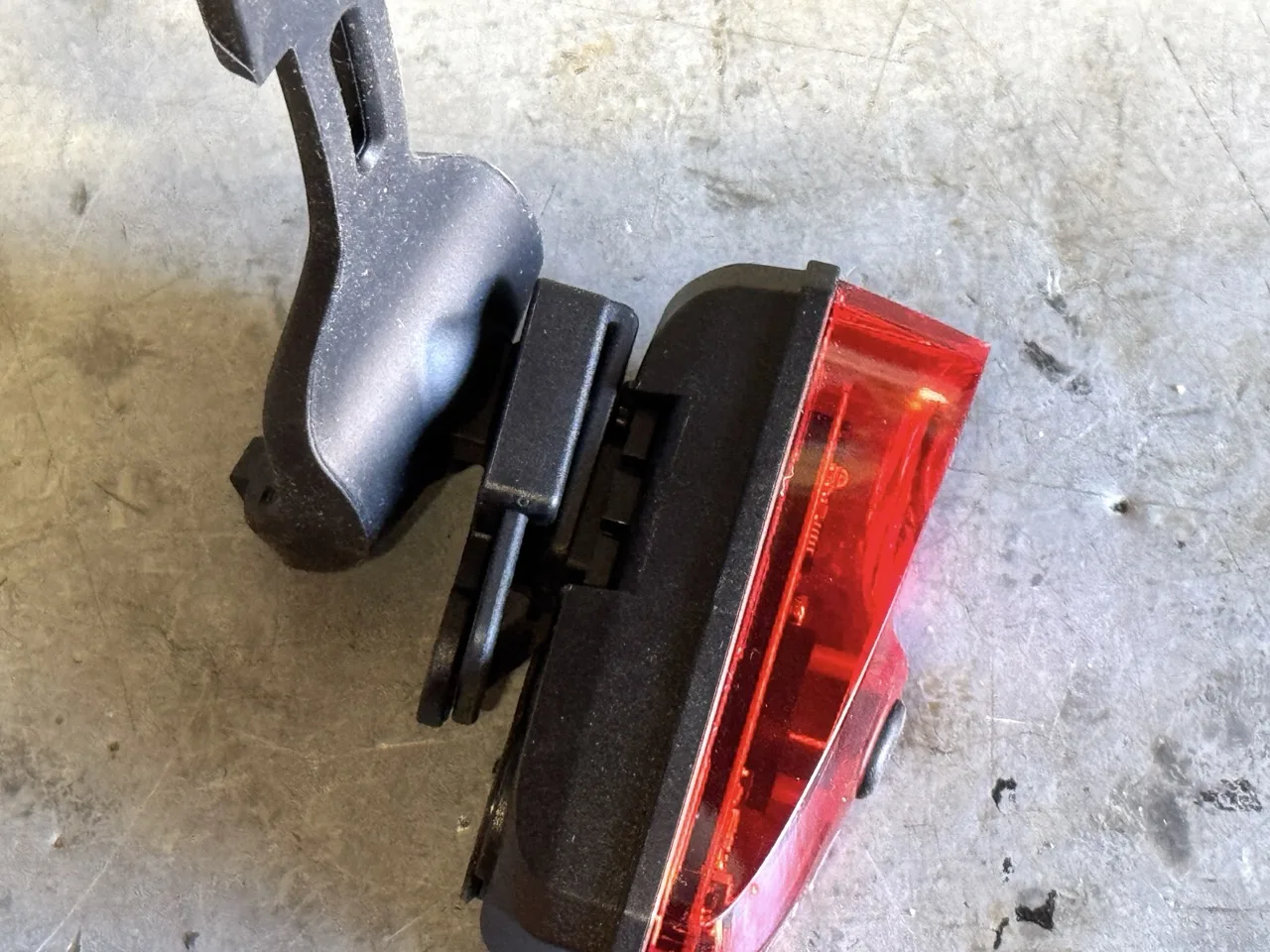
To allow the Gravity Plus accelerometer to calibrate properly, you have to install the light on your bike before turning the light on. Once it’s mounted to the bike, simply press and hold the power button for 1 second. After that, keep the bike still for another second. This will complete the calibration.
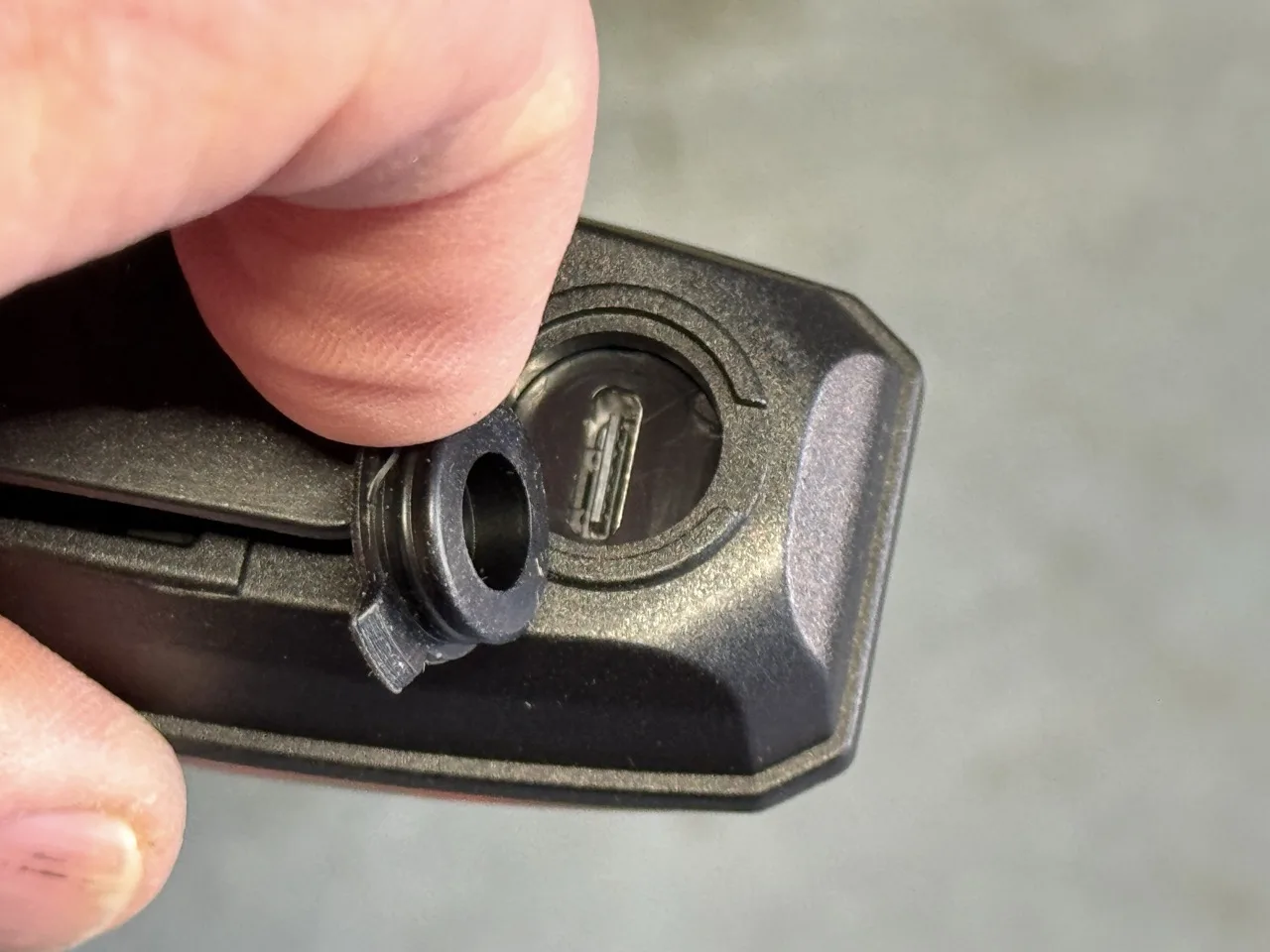
The light uses a rechargeable li-polymer battery. It uses USB-C to recharge and comes with a charging cord. The exterior of the Gravity Plus is ready for all-season riding. The charging port is also fully encased and weatherproof to keep the nasty elements out of that area.

The Gravity Plus comes with ways to mount the light to a seatpost or a backpack. It can be mounted vertically or horizontally. I use it mounted to the seatpost in a vertical orientation. The tool-less mounting makes it easy to use on multiple bikes, or take it with you to prevent the light from being stolen after locking your bike up.
In Use
I used both the “solid light” mode and the “flashing mode” equally on the few rides that I used the light. But, I liked the flashing modes a bit better, I feel the flashing helps to make you more visible to motorists. I found that the Gravity Plus light worked really well, and did what it said it would do.
When I came to a stop, the flashing stopped for a second while the secondary “brake light” came on solid, stayed lit for a few seconds, and then started flashing again. It did the same when I abruptly swerved or did evasive maneuvers.
When I slowed to a stop, I found that the light worked as advertised at the start of the long stop. that being said, I’m not sure it would work as well if you slow down at a very gradual pace.
Overall I liked the light and will be keeping it on my bike. I would highly recommend it.
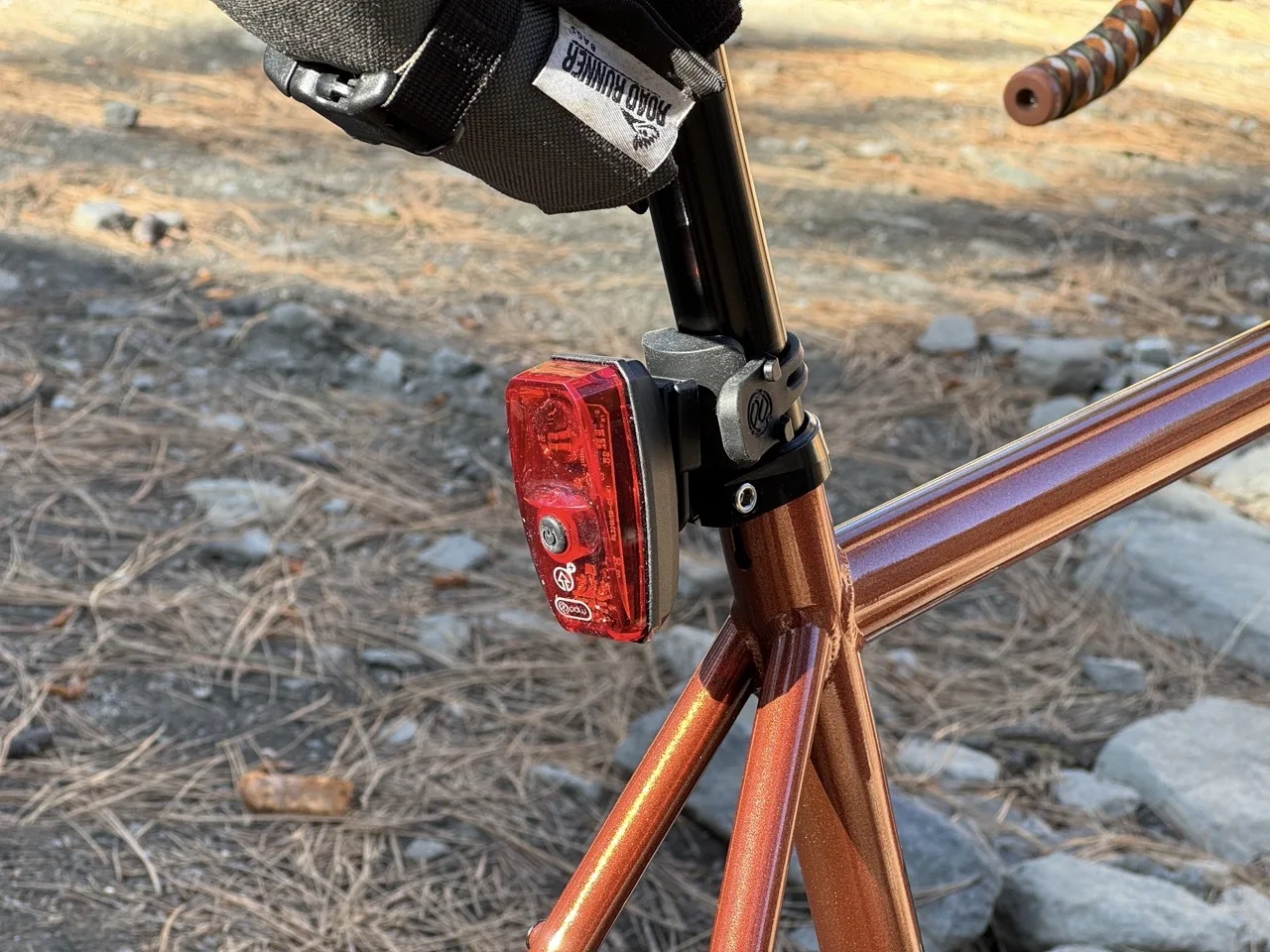
It’s an awesome product, by a company that focuses on the everyday needs of the average cyclist. Not to mention PDW is a member of 1% For the Planet. This means that each year, PDW donates 1% of its top-of-the-line revenue to nonprofit organizations working to protect our planet.
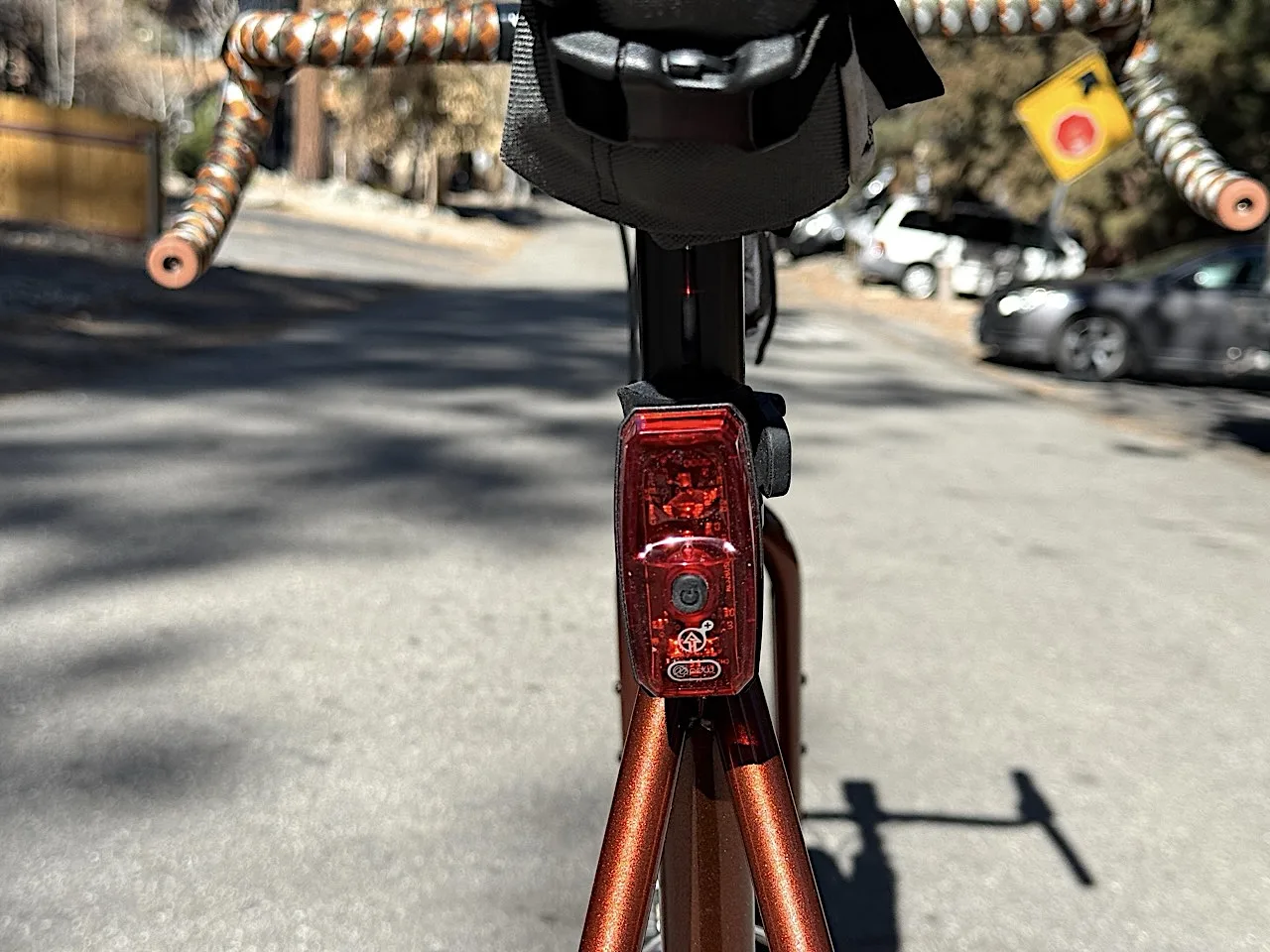
On top of that, for the price (see below), the Gravity Plus is an attainable solution that will help keep you safer while riding. And what’s that worth to you?
Retail and Specs
Retail: $40
- The automatic accelerometer brake light function shines 100 lumens bright
- 2 Modes (runtime): Solid – 20 lumens (12 hours), Flash – 80 lumens (30 hours)
- USB rechargeable li-polymer battery
- Weatherproof exterior for all-season riding
- Seatpost and backpack clip mounts included
- Mounts vertically or horizontally
- Includes USB-C recharging cord
- Weight: 1.9 oz
